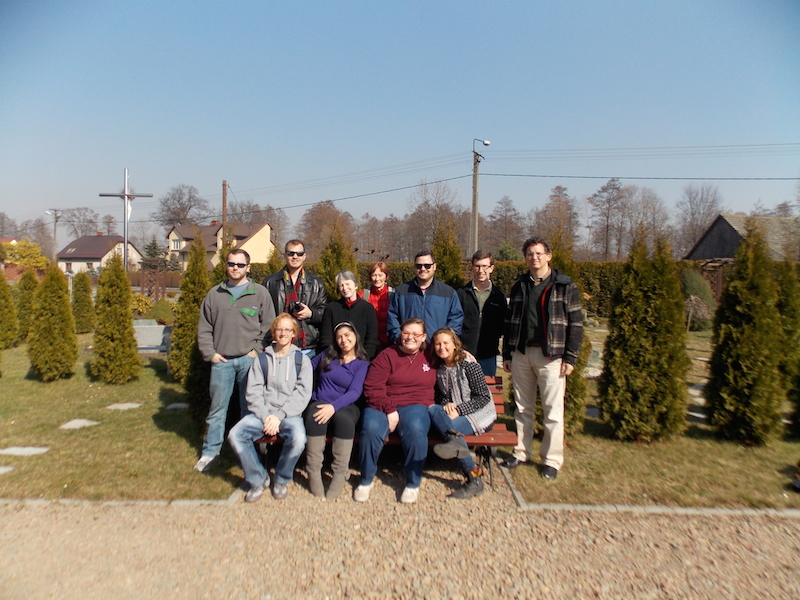By Caitlin Peabody
Entering the gates of Birkenau was surreal. We first climbed up the guard tower on top of the entrance to the camp. The view from the tower blew my mind. I had no idea the massive size of the camp and to imagine the camp filled with prisoners was an even more impossible fete. As we walked onto the grounds of the concentration camp, I was immediately filled with a sense of wonder. I had so many questions and visions in my head. We made our way to the preserved barracks on the men’s side of the camp. The living conditions, that we were only able to imagine from the layout of the barracks, were unimaginable to me. Tomasz had also joined us for this tour and did a very good job of painting the picture in our heads of what it was like for the prisoners. As we crossed over the platform that the majority of the Hungarian Jews were unloaded onto to be sent into the death camp, I had a heavy heart. We continued on and explored the ruins of the gas chambers and ovens that had been blown up by the Nazi’s in effort to try and cover up their horrific acts. Tomasz continued on and told us that the small ponds next to each destroyed gas chamber, along with a field that was in the very back of the death camp, were all filled with human ash. The Nazi’s had attempted to get rid of all the evidence by dumping the human ash into ponds and also burying the ash in fields. The entire experience from Birkenau was shocking and humbling. I am still just trying to reflect and really understand the whole situation.

The view from the guard tower, which shows only the men’s side of the Birkenau. The death camp is located behind it.
I spent most of the day today in the town next to Auschwitz, called Oswiecim. After the hour drive we made our way to the International Youth Meeting Center to pick up our tour guide Natalia, who is a volunteer at the center. We then went to the beautiful monastery Harmeze, which houses the exhibition of the former inmate of Auschwitz, Marian Kolodziej. It was a beautiful and yet disturbing representation of his experiences at Auschwitz. He never verbally spoke about is experience, but instead displayed them through art. After we finished there we went back to the International Youth Meeting Center and learned more about the history of their creation. Afterwards Natalia took us on a brief tour of Oswiecim. We visited the only remaining synagogue, which is now the Auschwitz Jewish Center. We also walked to the main market square and also the old Jewish street. We learned that there are currently no remaining Jews in the town and only one returned to the town after the war was over. It was a very interesting perspective and an almost different view of the Holocaust in that town.



thank you for sharing the story of your journey. It is deeply moving and disturbing. Thanks for bearing witness